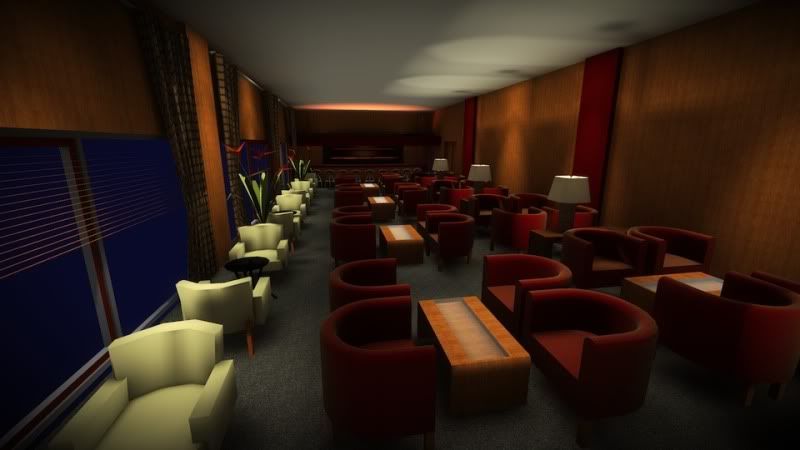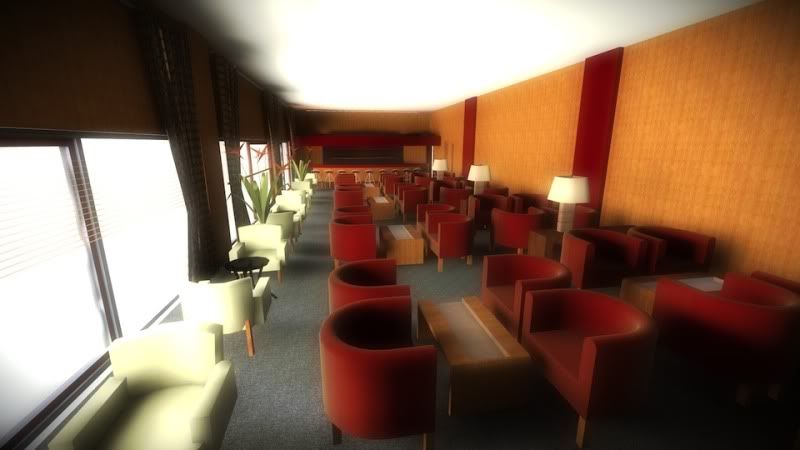E-on-Lumenrt render for Sketchup
-
Hi Everyone,
Here are some links to a few new LumenRT renders. I really like the softness and richness of the light in these:




-
@ecuadorian said:
The reason I believe LumenRT and LightUp will be close competitors is that LightUp (and soon Lumion) can also export models that you can send to a client to freely explore. The LightUp player is free and only a 367KB download. I can navigate the model you saw in the video @1080p in LightUp player with no performance hiccup on a Nvidia GTX 570. Models with a lot less detail can be explored on mainstream GPUs.
However, in my experience, you never know what kind of computer the client has, if he's tech savvy enough to open an exe, bypass Windows' UAC and antivirus warnings, and navigate a model you send him without getting lost or getting stuck in a corner. Maybe he doesn't even have computer at all... some people only use smartphones nowadays and have forgotten computers. So the only time you end up using freely explorable models are when you take your laptop and navigate the model yourself in front of the client.
That's why I prefer videos and stills even though LightUp (and soon Lumion according to its creators) also offer navigatable models.
If you're concerned about your clients hardware, you can simply export a panorama from LightUp with a single button click:
[flash=512,512:2o630022]http://www.light-up.co.uk/resources/cubicvr/panoviewer.swf?filePath=http://www.light-up.co.uk/resources/cubicvr/cube1/&prefix=cofla[/flash:2o630022]
Also ran the Cafe Bar model through LightUp v2.1 after adding a bunch of IES lights sources + some area light sources around the bar area (LumenRT just does a single parallel light ie The Sun, right?)
Lighting time was 5m40s. Images straight out of LightUp with no touching up.

and and quick daytime one too:

-
Now there seems to be more information about Lumenrt in their webpage.
http://www.lumenrt.com/ -
yes but it went away as fast as it came online :s
-
No, just moved to a different page...its available for purchase now! http://www.lumenrt.com/purchase/
Special intro price of $195.00...SRP $295 -
So, who'll be the first to bite this time?
I have found no free trial... -
First observation: Reflections seem to be hybrid. For closer objects it seems to be using either real-time raytracing or a real-time flat mirror map. Far away objects seem to be rendered using a standard reflection map, either cubical or spherical.
-
It seems that QuadroFX cards are not supported ! I tried to launch one of the boxes available for download on their website, and it's not workink with my Quadro FX 1800...

-
@ecuadorian said:
So, who'll be the first to bite this time?
I have found no free trial...Hello there sketchers. I'm new here on this forum.
Well i did bite

I'm currently trying out my new gadget... it will be interesting.
Sig
-
@panga said:
It seems that QuadroFX cards are not supported ! I tried to launch one of the boxes available for download on their website, and it's not workink with my Quadro FX 1800...

I have no problem and use a Quadro FX 1700. I do have 8meg of ram. It works beautifully for me. All the models I have rendered are acceptable most really good. Beware high quality can take an age. Plants need to be low polygon.
I will definately use this as part of my SU Vue Max pipeline. I would like a range of materials that can be applied in SU, work really well in LumenRT and then translate to Vue materials when imported into Vue so you really get continuity.
I hope that is of interest. -
Thanks for your feedback thecravatman ! Maybe I need to update my nividia drivers...I'll try again tonight.
Cheers.
-
Hello to all
I would like to thank you first on this subject with all the information it .. I am interested in the LumenRT program, but I don't know more about it, or about all rendering plugin for SketchUp.
I use Cinema 4D, and plan to learn a second program, to improve some projects, and the Google SketchUp is one of my choices.
My question is focused on how we comparison between LumenRT and LightUp, Or they are completely different?
If they were in the same field .. What the best choice for purchase?
Any advices I will be thankful.
-
Hi,
I bought LumenRT a few days ago as it seems to complete my suite software...but could not success to make livecubes work on my QuadroFx 1800...all drivers are uptodate...it's a bit frustrating...

Any clue or advice ?
Edit : Is someone familiar with Eon website and forums, because I can't success to see their forums. I succeed to register my lumenRT licence (got the confirmation page), but after that, when I go to "my account" i got no product registered !! and consequently i cannot access forums or technical support...
If someone could help me ?!!

-
Does anyone know if LumenRT supports any type of artificial lighting? ....ies, point, spot, etc.? All examples on the site are sun lit only, so I'm curious.
-
From what I've seen and read until now, it's only the sun.
-
Just supports SU sun.
-
Just got Microsoft Kinect to navigate around my latest model in LumenRT with guestures only!
It works really well IMHO.
I shall test and maybe change some of the gestures.
Nice program! Well done e-onsoftware.
Has anyone else hacked the Kinect for the PC? -
Panga E-on forums are back up now.
You can also open a ticket to the feedback center.
Hope that helps.
T -
Tx Cravatman, My lumenRt is now registered on the website. I'll open a ticket as soon as I can.

-
Other software companies allow you to download a demo to try before you buy, and you can also access the support forum so you can take a look at what kind of problems the users are facing. However, there's no demo for Lumen RT, and you can't even view its forum before buying it. Now that's a blind purchase...
Advertisement







